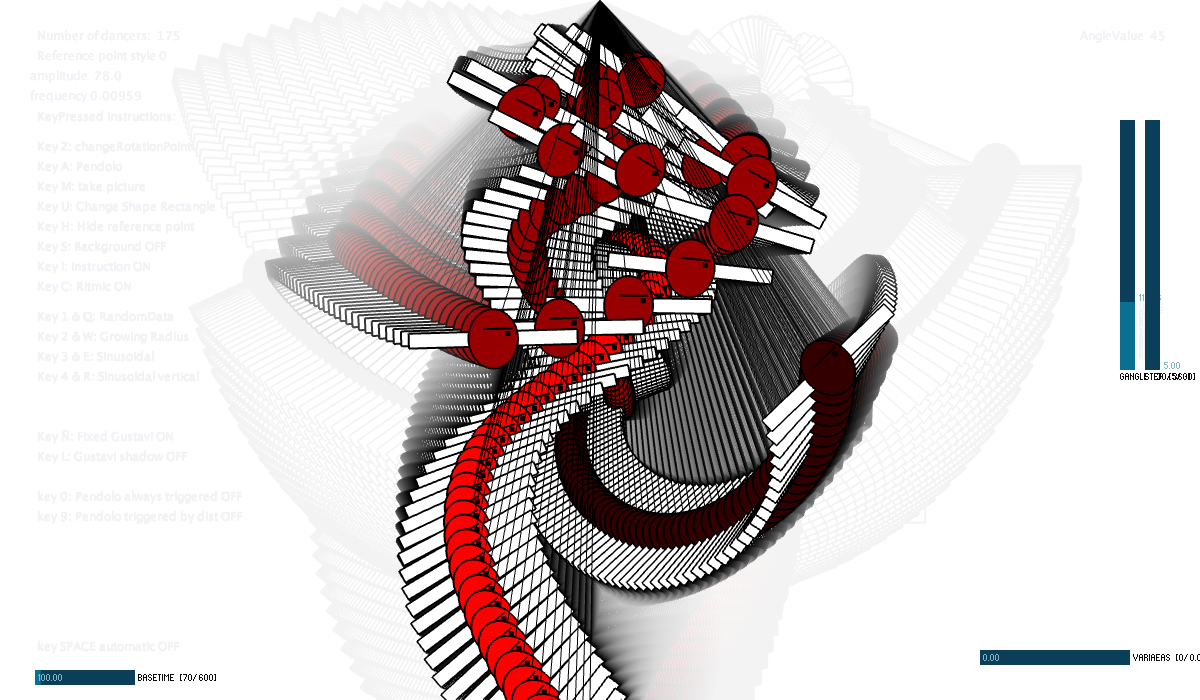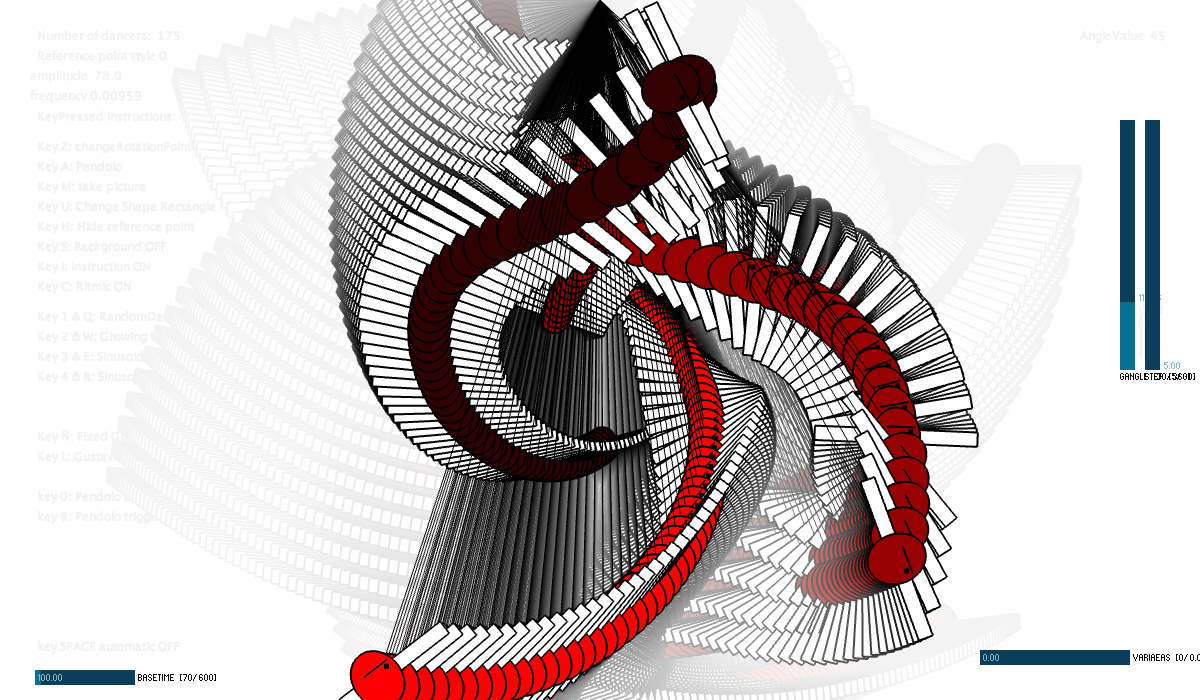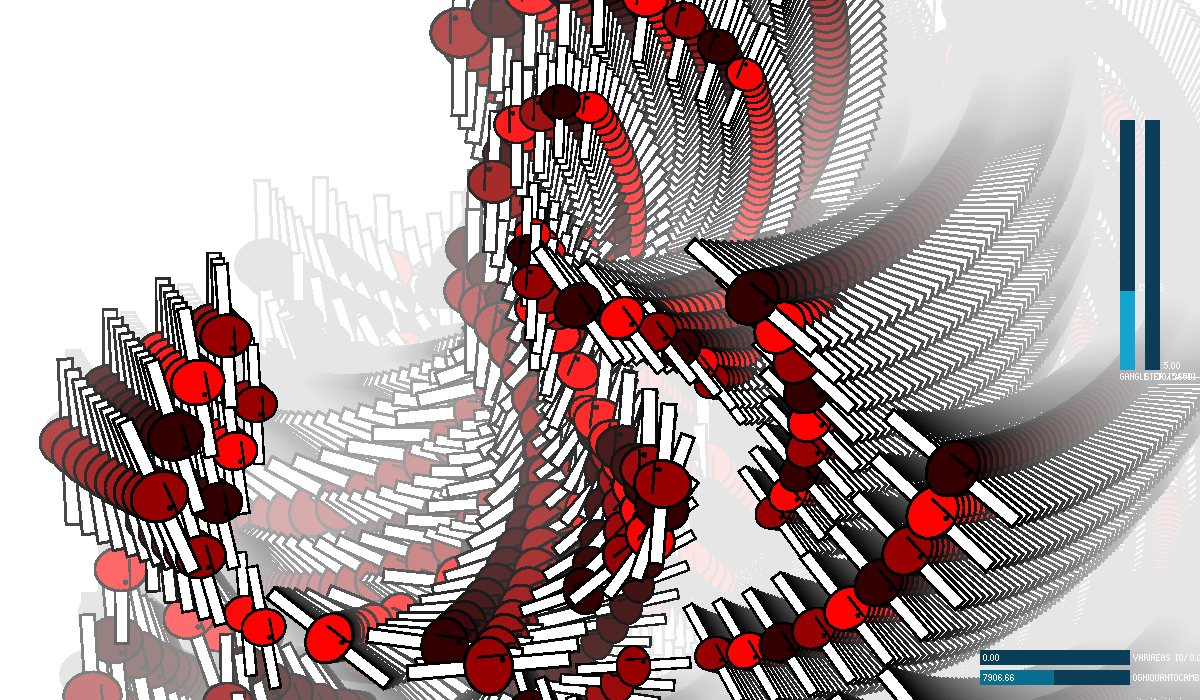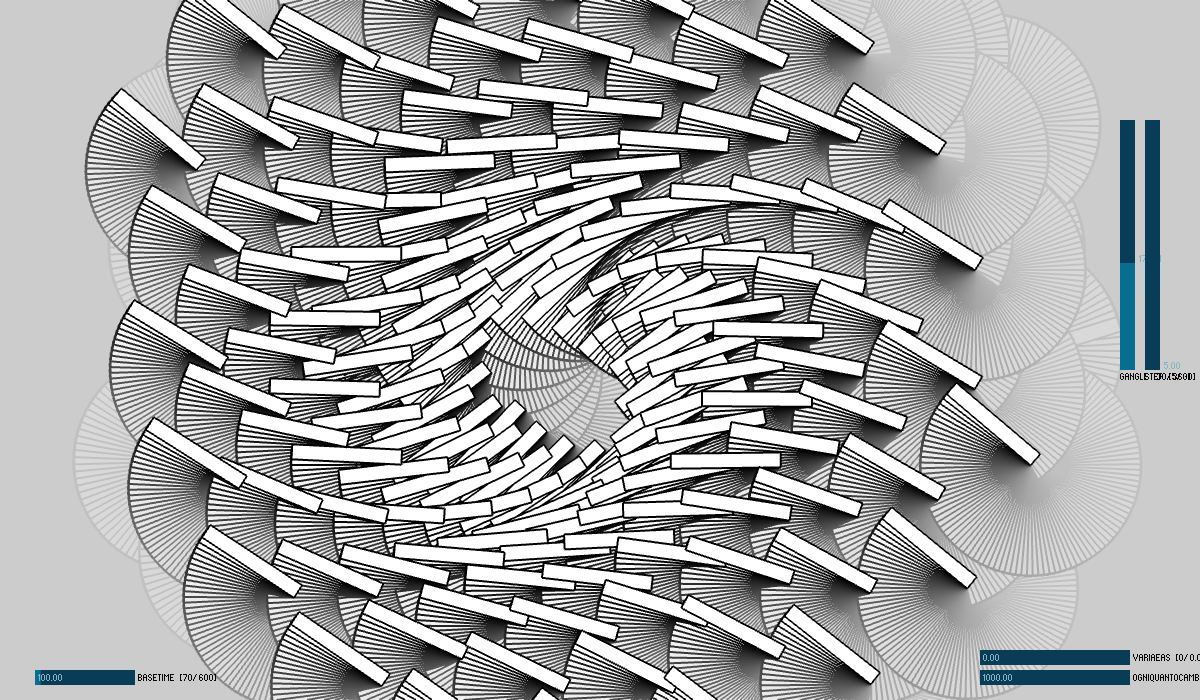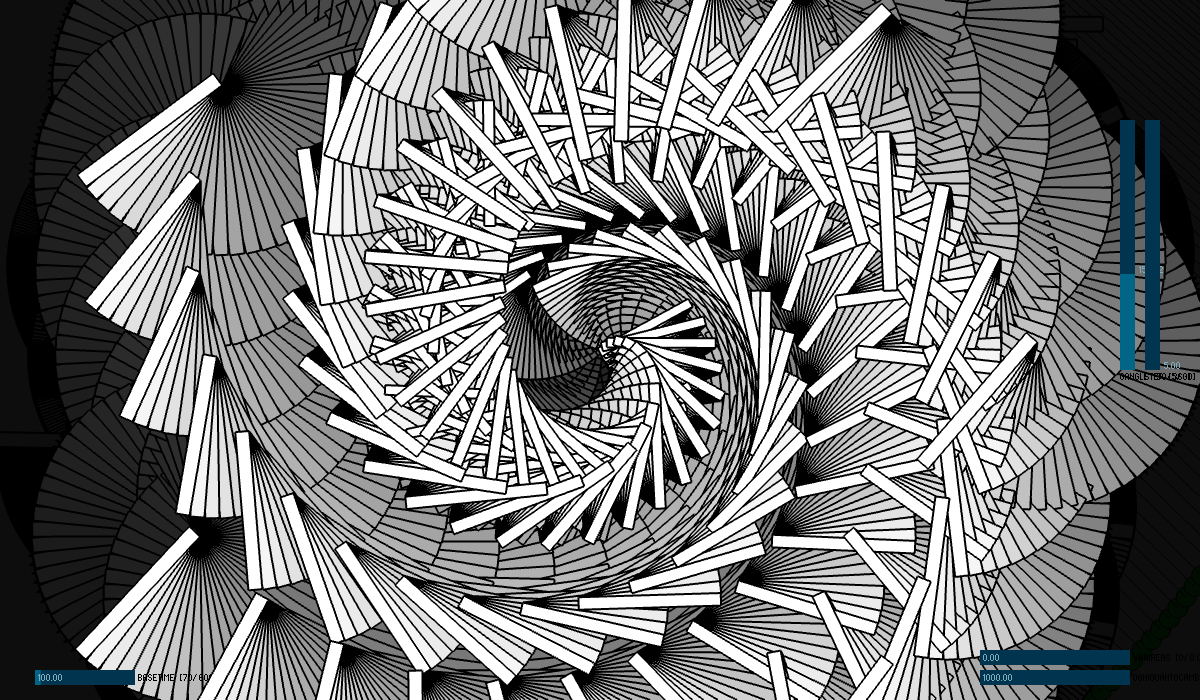METAMORPHOSIS
Metamorphosis, developed by Paola Tognazzi, is a dynamic patterns study and composition application. The software was designed for creating immersive 3D visual installations. It enables users to produce endlessly varying patterns, forming dynamic flows of immersive vortexes projections. Users can customize these patterns, adjusting the shape, orientation, and speed of the modules.
//…Foto
Metamorphosis offers users a unique experience to see how their adjustments transform projection behaviors and feel the varying reactions.”
This tool has been used for physical interaction design practices in interdisciplinary collaboration that merge dance with technology, fashion, and architecture.
Choreographing Space by Paola Tognazzi from paola tognazzi on Vimeo.
SILENT WIND
Silent Wind is a variation of “Metamorphosis”. Differently from “Metamorphosis” where the modules travel in space, in this version the modules are fixed in their locations.
With Silent wind users can generate a wide range of patterns compositions, chose between two modules shapes and change their rotation, speed and directions. Through the interface users can control these parameters and visualize how gradually transform the patterns completely.
The software was created as a supportive tool to research how to create movement reactive garments.
When the software is connected to the Kinect or wearable sensors, can be used to map the body limbs energy and directions to the modules rotation. This process allows to observe and research how the patterns adapt to the body in movement.
If the body physical movement are connected to the textile in such a way to change the directions of the textile patterns modules, textiles with different properties according to how the body moves can be created.
It was used in the research project “Metamorphosis: reactive 3D printed wearables”
VIDEO STUDY 1: THE EFFECT OF ROTATIONS ON TRIGONOMETRIC PATTERNS
Silent Wind2 by Paola Tognazzi from paola tognazzi on Vimeo.
VIDEO STUDY 2: THE EFFECT OF ROTATIONS ON LINEAR GRID PATTERNS
Silent Wind 2 by Paola Tognazzi from paola tognazzi on Vimeo.
STUDY 3: THE EFFECT OF ROTATIONS ON NOISE CURVES
Silent Wind_Installation by Paola Tognazzi from paola tognazzi on Vimeo.

